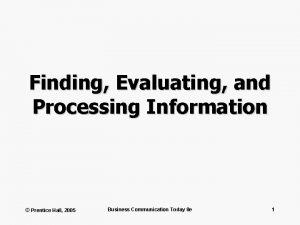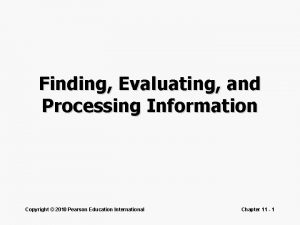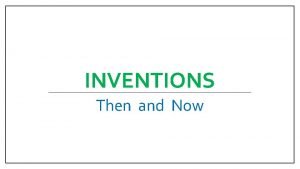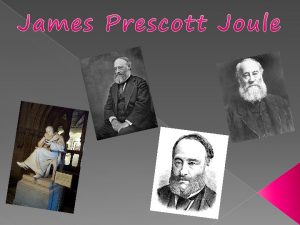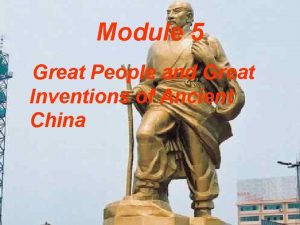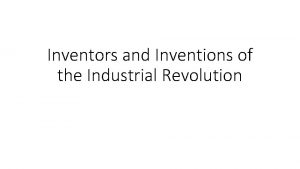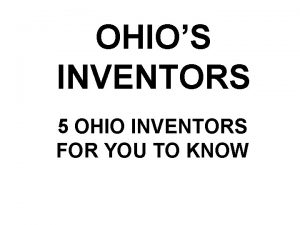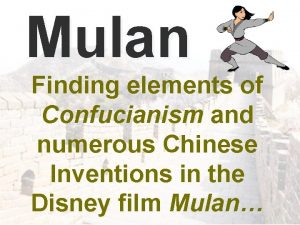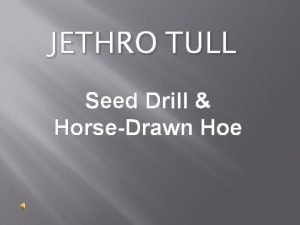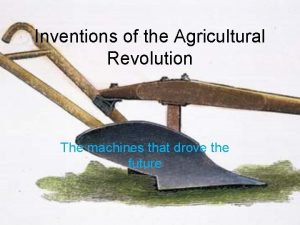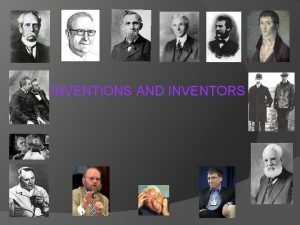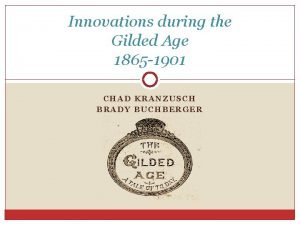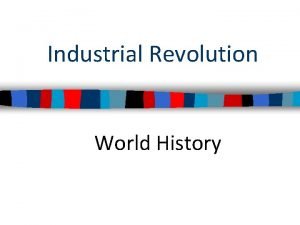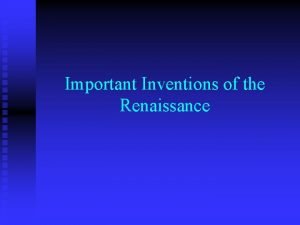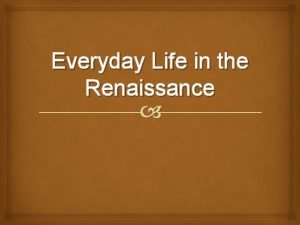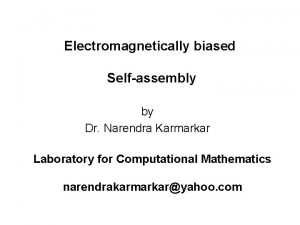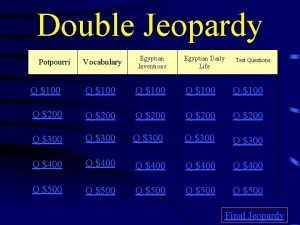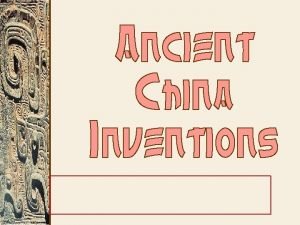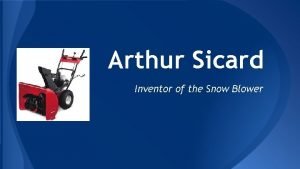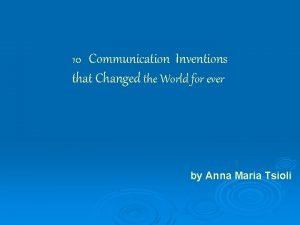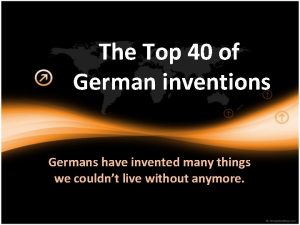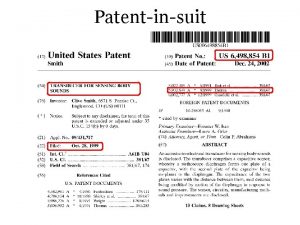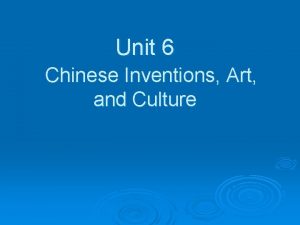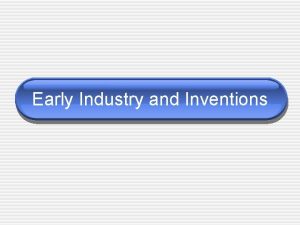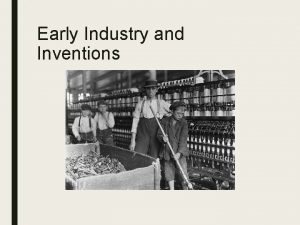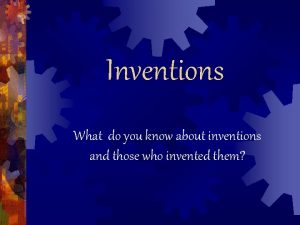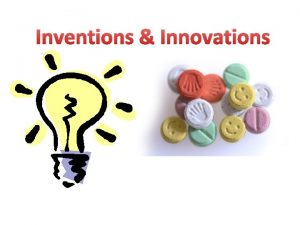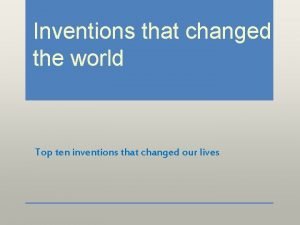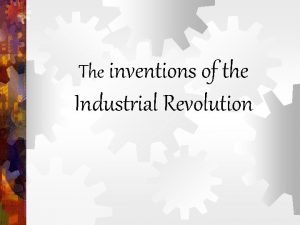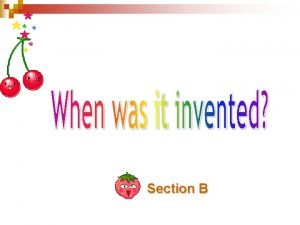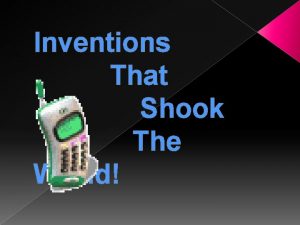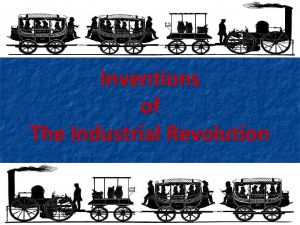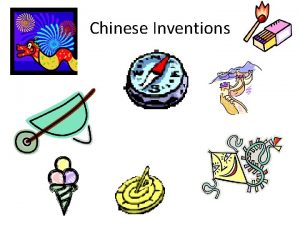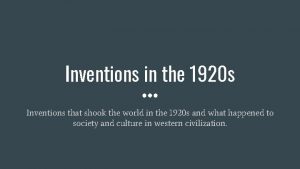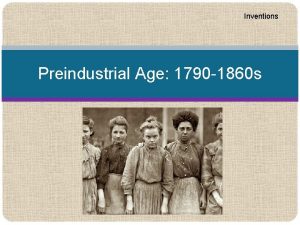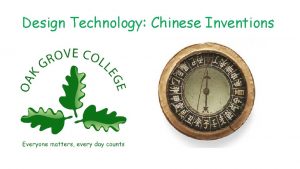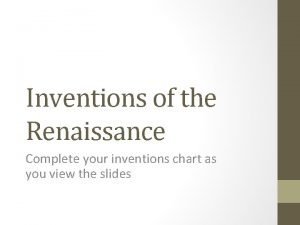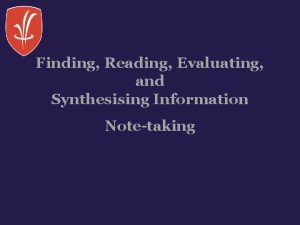Finding and Evaluating Inventions Prior Art How to





























- Slides: 29

Finding and Evaluating Inventions, Prior Art How to Find Inventions, How to Evaluate Inventions, Finding Prior Art

Preparing for the New Reality Fall • Sept. 23 Fundamentals of IP • Oct. 21 Patents and Patenting Process • Nov. 11 Technology Commercialization and UR • Dec. 9 How to Find Inventions, Good Inventions and How to find Prior Art Spring • Jan. 20 Assessing Market Opportunity of New Tech • Feb. 10 Working with Third Parties • Mar. 17 Risk Assessment for Tech Investments • April 14 Software and Open Source Software 12: 00 -1: 00 Wilson Commons, 2 nd Floor Gowen Room Lunch Provided

Finding Inventions I want to invent! Where do I look?

Inventions are often a result of your regular work. Regular Work • Every time a problem is solved there is a potential for an invention • Differences in what you have produced compared to prior versions can be inventions • Inventions that are in the end product or service are often the most valuable

Alternate solutions to problems overcome are also good sources of inventions. Alternatives that arise as problems are overcome • Filing on alternatives can block competitors • Advances in technology can make alternatives more viable in the future • Reductions in cost can make alternatives more viable in the future. Alternatives that were not pursued for business, market or technology reasons can also be good inventions.

Improvements, additional features, functions, etc. are all good places to look for inventions. Additions to your work are good areas to look for inventions • Added Features • Additional Functions • Improved Performance Features, functions and improvements that were not pursued for business, market or technology reasons can also be good inventions.

Taking a technology or solution and placing or adapting it to a new environment can create an invention. New Environments • Placing or adapting an existing technology in a new environment can create an invention • New uses for existing technology can be inventions.

Speculative Inventions not related to your work. • Working in technologies outside of your normal responsibilities • Brainstorming sessions • Future-casting

Value of Inventions While valuable inventions can come out of any category…. The more the invention is related to your work, the more likely it is to be valuable!

What makes a good invention? 1. 2. 3. 4. 5. 6. 7. Newness (Novelty) Advantages over the prior art Feasibility Applicability Alternatives Detectabililty Business Relevance

What Makes a Good Invention? Newness Is the invention a: revolutionary concept, or an incremental advance, or somewhere in between? Is the invention already known? A new use for a previous invention?

What Makes a Good Invention? Advantages How well does the invention work? What benefits or advantages does it provide over current methods? Speed Cost (UMC) Reliability Avoiding competing intellectual property For design inventions, how well does the appearance convey any intended message?

What Makes a Good Invention? Feasibility How difficult or expensive is it to implement? Is it more costly? Would it require a change in manufacturing process, qualification, customer acceptance? What else has to occur or to be done? Is the invention dependent on technological advancement? Is use dependent on licensing other IP? Does it require government approval?

What Makes a Good Invention? Applicability How broadly is it applicable? One field of use or many? Is it a solution to a specific problem or can be use more broadly? How broadly can it be licensed? One product? One company? One industry? One country?

What Makes a Good Invention? Alternatives Are there other methods of accomplishing a similar result? How easy is it to work around by alternative means? How difficult, costly, timely to use an alternative? Can we patent the alternatives? Can we block design arounds?

What Makes a Good Invention? Detectability How difficult would it be to detect use by others? Can I tell if someone is infringing? Does it require access to: manufacturing site; confidential materials; source code?

What Makes a Good Invention? Business Relevance What is the potential for commercialization? Starting a company? Licensing to established businesses? Potential revenue? Relevance to an interested business What are their product plans? How does the invention fit in a company’s R&D strategy? What licensing or new business potential does it have?

Searching State of the Art Technology with Patents How to use the international patent systems to find prior art and the state of the art for particular technologies

Patents as a resource of technology The patent offices around the world are a vast resource of technology. With online access, it is much easier to access the databases of the patent offices (and surrogate sources such as Google Patents) to research: -The state of the art for a particular technology -Prior art for a particular technology -Research solutions that other inventors have used for problems.

Too Many Answers The difficulty is now however, not finding the answers, but finding too many answers! Data is the garbage of the twenty first century. How can you find a manageable answer?

Finding the State of the Art for a Technology The technology search process to obtain manageable results: 1. Key word searching to find patents in broad categories 2. Filter results to find several patents related to the search request 3. Analyze Patent Classification Numbers of patents 4. Select relevant Patent Classification Numbers 5. Search by Patent Classification Number(s) 6. Narrow within a classification if necessary 7. Employ alternate search criteria if necessary 1. By Company 2. By Inventor 3. Patents cited in or cited by

Starting a Search 1. Key word searching to find patents in broad categories Google is a good place to start for key word searching Over inclusive – Typically brings back far too many possible patents. Under inclusive – The same item can be referred to with different words (Paper vs. Sheet Material vs. Printing Medium, etc. ) 2. Filter results to find several patents related to the search request. Quickly scan results to find a couple of patents that are in the area of your search.

Patent Classification System 3. Analyze Patent Classification Numbers of patents The patent classification systems (there is a US and an International version) are a highly detailed breakdown of every area of technology. 4. Select relevant Patent Classification Numbers If you use Google Patents, it will provide links to the US PTO description of each classification. Useful source: http: //www. uspto. gov/web/patents/classification/

Patent Classification Example VEHICLE CONTROL, GUIDANCE, OPERATION, OR INDICATION 2. Remote control system 3. Aeronautical vehicle 4. . Altitude or attitude control or indication 5. . . Rate of change (e. g. , ascent, decent) 6. . Angle of attack 7. . . Air speed or velocity measurement 8. . . Threshold or reference value 9. . Warning signal or alarm 10. . . Compensation for environmental conditions 11. . . Auto pilot 12. . Inner/outer loop 13. . . Spacecraft or satellite 14. . Flight condition indicating

Using the Patent Classification System (cont. ) 5. Search by Patent Classification Number(s) The EPO and USPTO sites allow searches by classification number. If you used Google Patents to get to the US classification or went there directly, there is a link on the site for all patents in the classification (very helpful!) 6. Narrow within a classification if necessary Further search within results (possible on EPO) or at least look at titles if have USPTO site classification listing.

Alternative Search Strategies Employ alternate search criteria if necessary 1. By Company – For a company in a narrow field, searching for the Assignee will give good results 2. By Inventor – Most inventors work in a narrow field 3. Search patents cited in the patents that are relevant. (back in time) 4. Search patents that cited the patents that are relevant. (forward in time) Good searching is often a combination of strategies!

Example: 1. Search Google Patents: One Wheeled Vehicle 38, 000 results! 2. Patent 3, 876, 025 Looked interesting 3. Reviewed Patent – Classifications 180/21 – Vehicle, special wheel base 180/7. 4 – Special drive device – Impeller 280/206 – Occupant Propelled – Occupant within Wheel 4. Searched 280/206 102 Results! (Much, much better) 5. Found patent 4, 729, 446 on a rolling sphere which is what I was interested in, plus a number of closely related patents to understand the art.

Sources Google Patents - www. google. com/patents/ US Patent and Trademark Office http: //www. uspto. gov/ European Patent Office - http: //www. epo. org/

NEXT! Attend all the Seminars! Fall • Sept. 23 Fundamentals of IP • Oct. 21 Patents and the Patenting a Process • Nov. 11 Technology Commercialization & UR • Dec. 9 How to Find Inventions, Good Inventions and How to find Prior Art Spring • Jan. 20 Assessing Market Opportunity of New Tech • Feb. 10 Working with Third Parties • Mar. 17 Risk Assessment for Tech Investments • April 14 Software and Open Source Software 12: 00 -1: 00 Wilson Commons, 2 nd Floor Gowen Room Lunch Provided
 Finding evaluating and processing information
Finding evaluating and processing information Finding evaluating and processing information
Finding evaluating and processing information Benjamin banneker inventions
Benjamin banneker inventions Who is joule
Who is joule Confucius teachings
Confucius teachings Key inventions of the industrial revolution
Key inventions of the industrial revolution 22power dot com
22power dot com Invention inspired by nature
Invention inspired by nature Henry bessemer inventions
Henry bessemer inventions Simple machine inventions
Simple machine inventions Latvian inventions
Latvian inventions Famous ohioans inventors
Famous ohioans inventors Examples of legalism in mulan
Examples of legalism in mulan Mi'kmaq inventions
Mi'kmaq inventions Seed drill and horse hoe
Seed drill and horse hoe Inventions that start with q
Inventions that start with q Agricultural revolution inventions
Agricultural revolution inventions Henry ford famous inventions
Henry ford famous inventions Gilded age inventions
Gilded age inventions Textile industry inventions
Textile industry inventions Renaissance inventions musket
Renaissance inventions musket Harlem renaissance inventions
Harlem renaissance inventions Narendra karmarkar
Narendra karmarkar Jeopardy potpourri
Jeopardy potpourri Hemp industry rizal
Hemp industry rizal Qin dynasty innovations
Qin dynasty innovations Famous asian inventors
Famous asian inventors Who invented snowblower
Who invented snowblower Inventions in communication
Inventions in communication Famous german inventions
Famous german inventions
